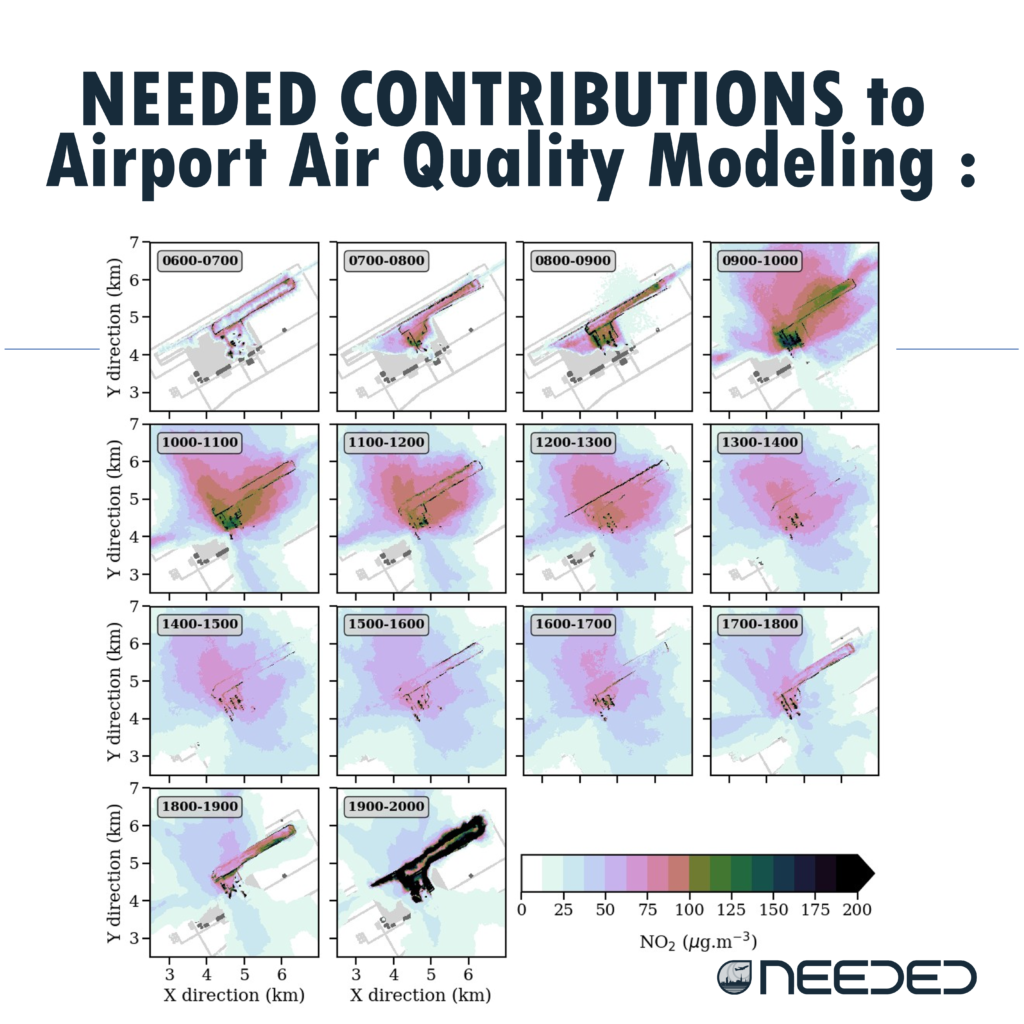Air quality at airports is a critical issue due to emissions from aircraft. The NEEDED project is enhancing air quality modeling by improving how the Meso-NH atmospheric model represents aircraft emission plumes—clouds of pollutants that disperse during takeoff, landing, and other operations.
Advancing Plume Representation in Meso-NH
Meso-NH simulates pollutant concentrations at airports, but accurately modeling aircraft plumes is challenging due to their dynamic nature. NEEDED addresses this by implementing advanced simulation techniques that capture the complex processes within these plumes:
- Enhanced Plume Simulation: NEEDED improves the accuracy of how pollutants like nitrogen oxides and particulate matter disperse by incorporating detailed physical and chemical processes within the plumes.
- Higher Resolution Emission Modeling: The project provides better spatial and temporal resolution of aircraft emissions, offering more precise predictions of pollutant dispersion.
- Integration of Real-World Data: By using data from field measurements, including those from ONERA – The French Aerospace Lab, NEEDED refines the model to closely reflect actual conditions.
Impact of NEEDED’s Work
These advancements lead to more accurate air quality predictions, which are crucial for protecting public health, supporting regulatory standards, and aiding the aviation industry’s shift towards sustainable practices. NEEDED’s contributions ensure that as airports grow, the models used to protect our skies remain reliable and effective.
Stay updated on the latest advancements in airport air quality modeling—follow NEEDED on LinkedIn for insights, news, and updates!
Credits: Sabatier et al., 2021. Image provided by ONERA – The French Aerospace Lab.

